Nourse Little Theater
Dan Brodkin
Bertolt Brecht’s play The Caucasian Chalk Circle held its world premiere in Carleton’s Nourse Little Theater in May of 1948. The play is set in Soviet Georgia near the end of the Second World War and was based on a fourteenth-century Chinese play. Brecht, a German playwright who had fled Germany in 1933 for fear of persecution under the Nazis, had continued to write in exile while living in the United States.
The play was originally written in 1944 in German. Its first production, in English translation, was directed at Carleton by Henry Goodman, a veteran of the Second World War and an admirer of Brecht’s. One of the main actors, Alvis Tinnin ‘49, was also a war veteran who attended Carleton on the GI Bill; he went on to perform that summer in the first professional production of the play. A second student in the production, George Soule ‘51, went on to Yale for his PhD in English and later taught at Carleton for thirty-three years. Not until 1954 was the work ever produced in German. The Caucasian Chalk Circle, one of Brecht’s most celebrated works, has since become one of the most frequently performed pieces of German theater.
By the time of the Brecht play, the Nourse Little Theater had been operating for at least fifteen years and had become the site of many popular artistic productions, as well as certain club meetings. Nourse Hall, in which it is housed, was constructed in 1923, originally as an all-female dormitory. It was built on the former farmland of the Nourse family—hence its name.
Nourse Little Theater continues to host regular theatrical productions as well as comedy shows and many other types of performance. Although the stage is small and the theater seats only 100 people, it remains a site of major importance within the performing arts community at Carleton.
Performance of Chronicle of Hell
A group of students perform a play in 1968 in Little Nourse Theater. Many of the shows put on today are done by the Experimental Theater Board (ETB), which is an entirely student-run theater group.
The Caucasian Chalk Circle, 1948
The world premiere of The Caucasian Chalk Circle was performed in Little Nourse Theater. The man in the back center was Alvis Tinnin, the star of the show and the first African American student to attend Carleton College.
View of Nourse Hall, 2001
Nourse Theater is a black box theater tucked in the basement of Nourse Hall. The entrance to the theater is on the lowest level of the north side of the building.
Lenny Dee Sketch Comedy in 2012
Not only does Little Nourse Theater host theater productions, it is also the home of Carleton’s comedy groups: the Lenny Dee Players, Queens of Comedy, Cujokra, and the One Knight Stands.
Nourse Little Theater Graffiti
For several decades it has been a tradition for the casts of the plays and comedy groups to paint their names on the back walls of Nourse Little Theater.
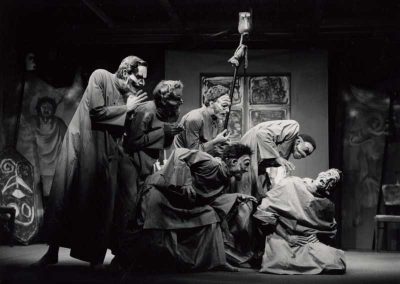
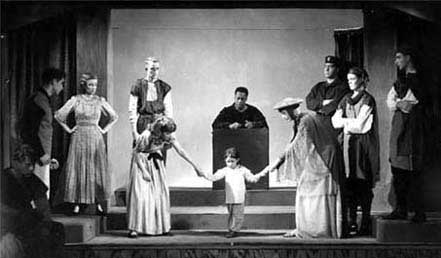
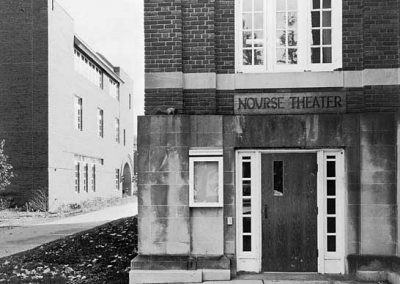
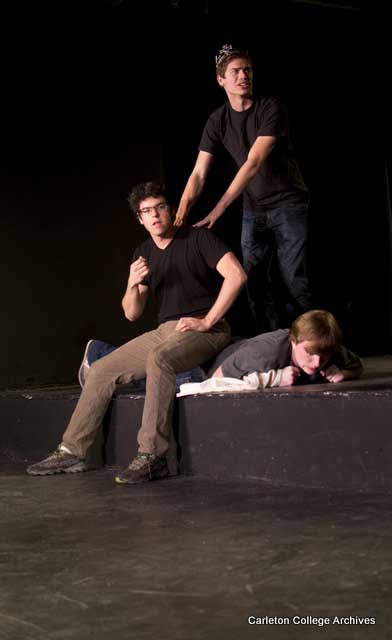
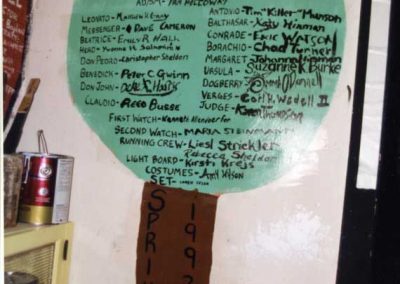
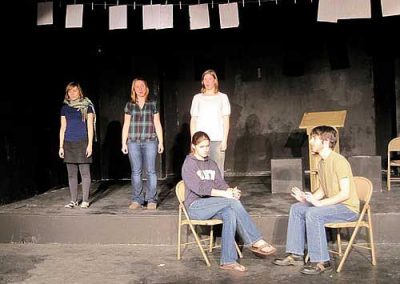
Recent Comments